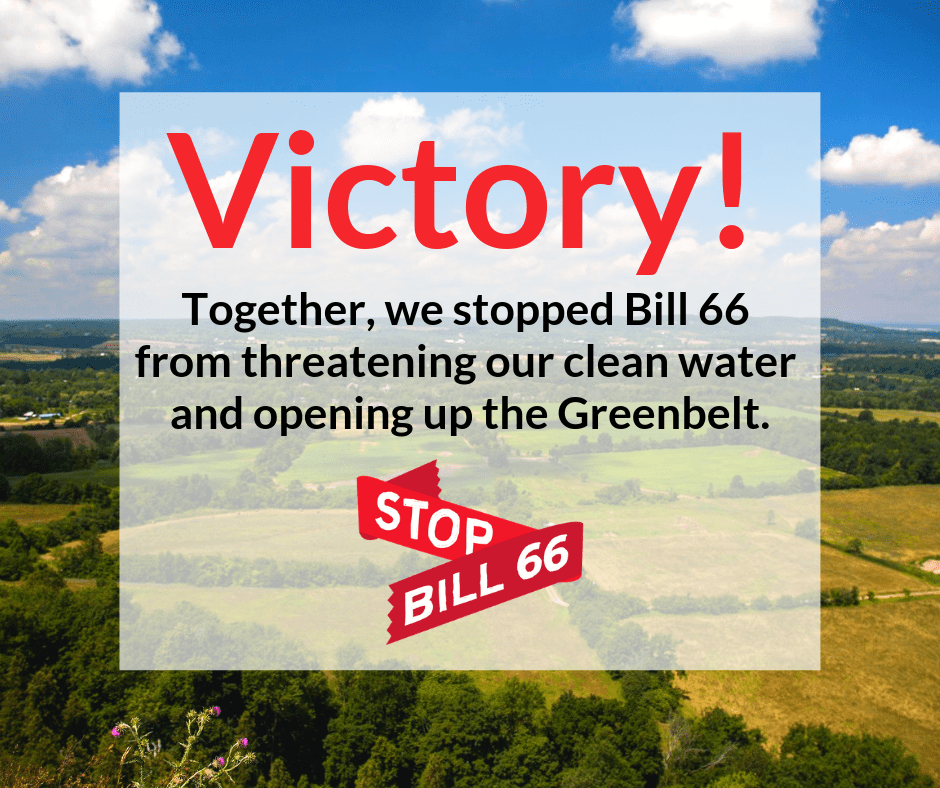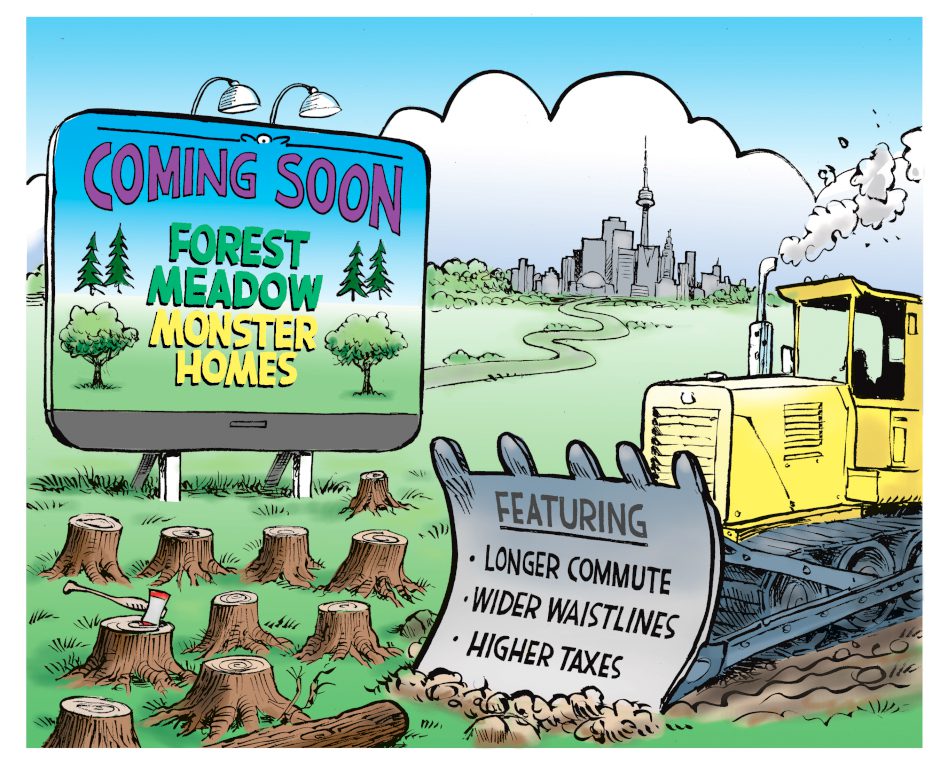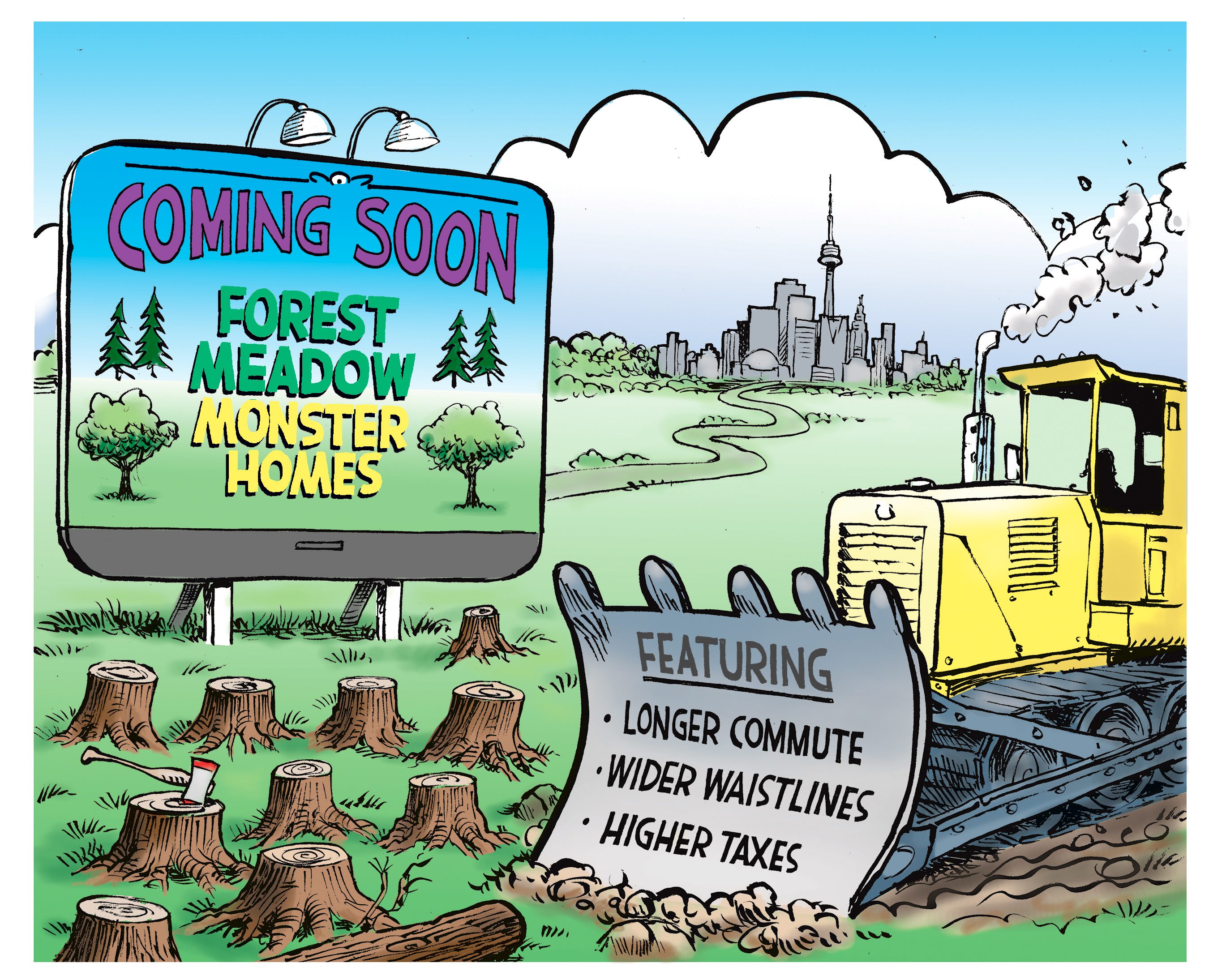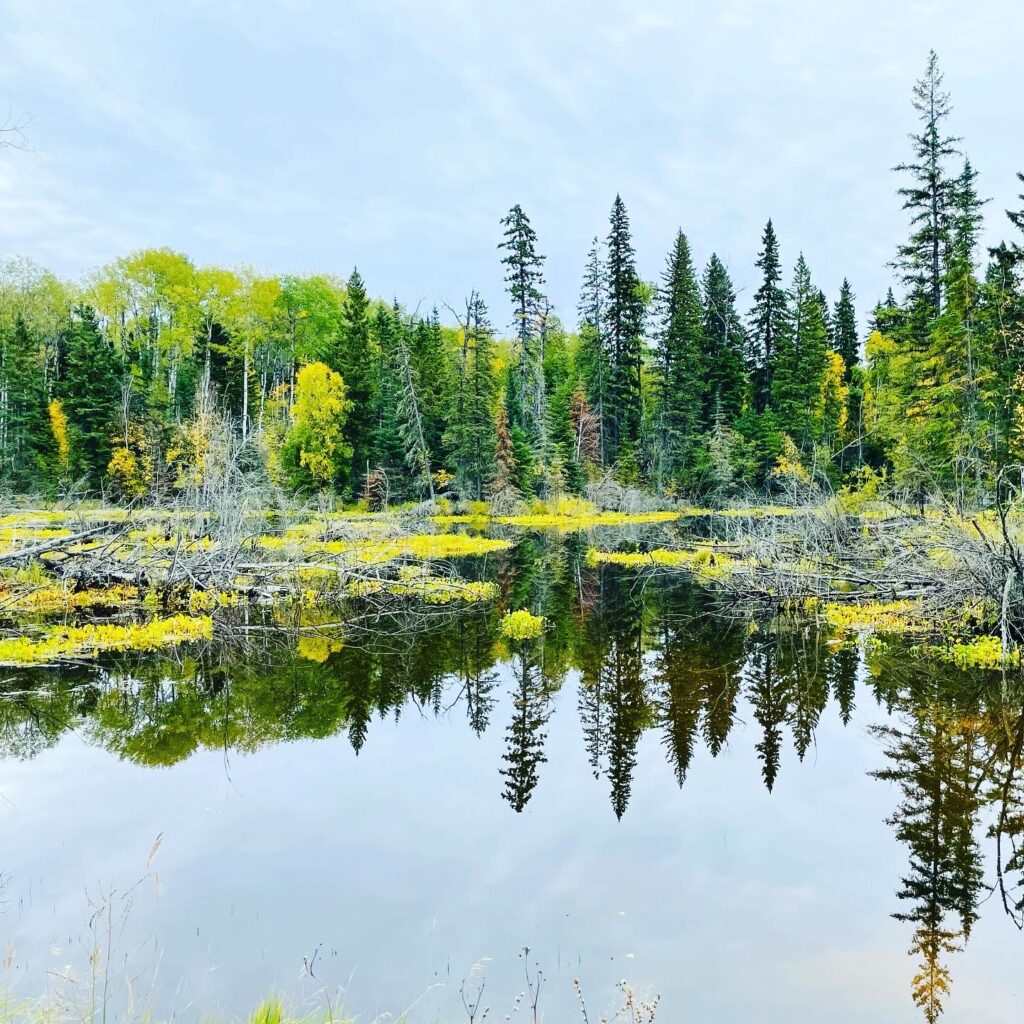There was cheering and a huge sigh of relief last week when the Ontario Minister of Municipal Affairs and Housing announced that the government will remove Schedule 10 – the proposed “Open For Business” Planning Bylaw – from Bill 66. Schedule 10 would have opened up Ontario to new employment-focused land development almost anywhere by exempting laws that permanently protect places like the Greenbelt, drinking water sources and vulnerable watersheds like Lake Simcoe. Our farms, lakes, water supply and natural areas were threatened.

Massive public pressure led the Ontario government to reverse course and promise to remove the proposed “Open For Business” Planning Bylaw (Schedule 10) from Bill 66. Over the past 6 weeks over 50,000 people and 15 municipalities sent letters to the province opposing Bill 66. Thousands of lawn signs opposing the attack on the Greenbelt and our drinking water sprouted up around the province. Billboards appeared in several communities and MPPs were called to account by their constituents.
Concern about the Bill was growing in professional and business organizations as well. The Ontario Professional Planning Institute surveyed its members and found 77 per cent agreed that Bill 66 went too far. The Ontario Federation of Agriculture said that Schedule 10 threatened a “death to farming”.
Thankfully, the provincial government took heed of the backlash and has promised to remove Schedule 10 from the Bill when it returns to the Legislature, sometime after February 19th.
But there’s a new threat to farms, forests and watershed due to the recently announced plans to alter Ontario’s Growth Plan. So, what is the Growth Plan and what are the changes that pose a threat?

The Growth Plan is an award winning planning framework that sets out the rules for how cities and towns should grow and develop across the Greater Golden Horseshoe. It is the “where and how to develop” plan that is the partner to the “where not to develop” plans of the Greenbelt, Lake Simcoe Protection and Clean Water Acts.
It determines, for instance, how and where cities and towns can grow to accommodate new residents and new employments areas. The 2017 Growth Plan encourages more development in existing built up areas, and slows down the sprawl that is gobbling up farmland and forests in the Great Golden Horseshoe that are not protected by the Greenbelt.
By encouraging more efficient use of land in both large and smaller communities, the current Growth Plan makes it possible for more people to live closer to where the work and shop. It encourages more public transit, which helps reduce pollution. It encourages growth that is better for our health, keeps our taxes in check, reduces our commutes, and improves the prosperity of the province.
For almost 40 years, successive Ontario governments have been incrementally encouraging less urban sprawl, more compact urban growth, and moves toward greater public transit capacity.
But this will now change if the Ontario government’s proposed weakening of the Growth Plan proceeds.
These proposed changes include:
- Allowing urban boundaries to expand without proper evaluation of need. This will increase rates of sprawl and eat up more farmland and natural areas. We know that this is not needed as provincial data shows there is enough land designated to meet housing needs to at least 2031.
- Reducing the requirements to build within cities instead of outside them. This lowers the priority of building new development within the existing town or city and also lowers the priority that new areas are developed more densely than the past. In other words, it encourages low-density sprawl over redevelopment and revitalization.
- Removing the requirement to plan for future housing needs based on what is actually needed. This marks a return to the bad old days of building more detached single family homes on farmland because that is what was done in the past.
- Allowing new public transit stations to be built and developed around in areas of low population and employment instead of in mobility hubs that service large numbers of people. This is the return of the “GO station in a cornfield” model which encourages more sprawl, cars and highways.
In the long run, a return to sprawl-focused development will eat up the farm lands and natural areas that surround our cities and towns. It will decrease our quality of life, increase our commute time, increase our property taxes and diminish the quality of our air, water and food. It will also eventually bring development right to the boundary of the Greenbelt and other protected lands which could lead future government to argue for opening them up to development.
The proposed changes to the Growth Plan are huge mistakes. Instead of gutting our efforts to make our cities more livable and keep our farmland, water and natural areas protected we should:
- Keep the existing 2017 Growth Plan approach to maintain denser, compact cities and towns that can only grow after a full review based on evidence
- Save farmland for healthy local food, employment and food security
- Revitalize our urban areas by keeping intensification targets for missing housing types, so housing that people want and need (e.g. rental, row houses, town houses, smaller mainstreet condos, smaller homes for seniors and new buyers) is what is built – not monster homes on big lots.
- Build purpose built rental housing and supportive housing options near major transit hubs (subway, bus and train stations)
- Base Growth Plan changes on good information, involvement by local citizens and long term planning of infrastructure needs, costs and tax implications.
Let’s grow right Ontario. To learn more about the Growth Plan changes go to https://ero.ontario.ca/notice/013-4505
To keep up to date on what you can do to stop our farmland from being paved over, sign up below.









